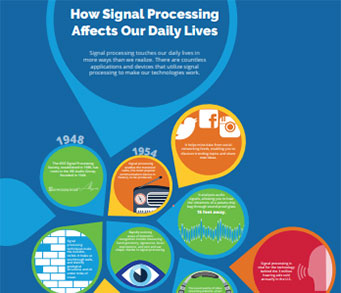SPS Feed
Top Reasons to Join SPS Today!
1. IEEE Signal Processing Magazine
2. Signal Processing Digital Library*
3. Inside Signal Processing Newsletter
4. SPS Resource Center
5. Career advancement & recognition
6. Discounts on conferences and publications
7. Professional networking
8. Communities for students, young professionals, and women
9. Volunteer opportunities
10. Coming soon! PDH/CEU credits
Click here to learn more.
The Latest News, Articles, and Events in Signal Processing
Lecture Date: December 9, 2020 -- Virtual Lecture
Chapter: Santa Clara
Chapter Chair: Yang Lei
Topic: Hierarchical joint classification models for multi-resolution,
multi-temporal and multi-sensor remote sensing images.
Application to natural disasters
We continue to live through a unique experience in history. Out of concern for each other, we have voluntarily participated in essentially shutting down economic activities across the globe. We have discovered the interdependencies and precariousness of our lives and livelihoods. We have learned who and what is essential or important and have simplified our lives. We have realized the virtue of patience and self-kindness as we navigate the tremendous challenges of working from home and balancing our work obligations and family needs.
The safety and success of autonomous vehicles (AVs) depend on their ability to accurately map and respond to their surroundings in real time. One of the most promising recent technologies for depth mapping is single-photon lidar (SPL), which measures the time of flight of individual photons. The long-range capabilities (kilometers), excellent depth resolution (centimeters), and use of low-power (eye-safe) laser sources renders this modality a strong candidate for use in AVs.
The articles in this special section were focused on the current state of the art as well as emerging trends in the design, development, and deployment of sensing and perception technologies for autonomous and automated driving. Such technologies include camera, ultrasound, Global Navigation Satellite System-, lidar-, and radar-based platforms integrat ing signa l processing components to process the acquired data and extract information to be used for recognition, navigation, and situational awareness.
Reports on the technology of body worn cameras (BWMs) and discusses the threat to privacy that this passive data collection creates, along with opportunities to mitigate this risk. Furthermore, we argue that the use case of BWCs at work will stimulate the development of solutions that prevent the collection of data that could infringe upon the privacy of the wearer. Finally, we discuss the desirable properties of privacy-enhancing technologies (PETs) for BWCs.
Like many of you, I am still working remotely, due to COVID-19, while writing this editorial. As in the past two years, I was planning to give an update on the magazine from our editorial board meeting. However, since ICASSP was remote, we have not yet scheduled the board meeting. Instead, I have decided to talk about a topic of personal interest: connections between communications and sensing in the context of vehicular systems.
Pages
SPS Social Media
- IEEE SPS Facebook Page https://www.facebook.com/ieeeSPS
- IEEE SPS X Page https://x.com/IEEEsps
- IEEE SPS Instagram Page https://www.instagram.com/ieeesps/?hl=en
- IEEE SPS LinkedIn Page https://www.linkedin.com/company/ieeesps/
- IEEE SPS YouTube Channel https://www.youtube.com/ieeeSPS


























